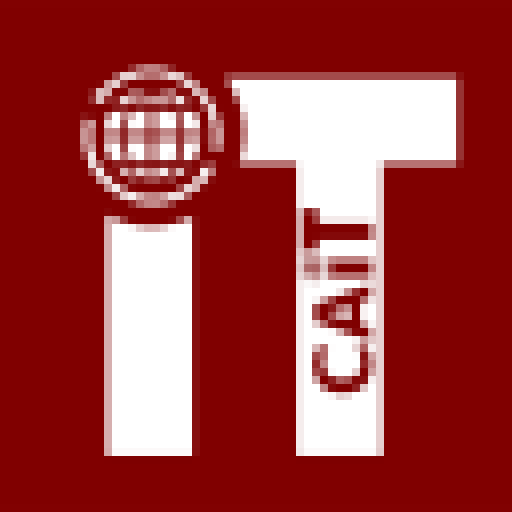Questions and Answers
FAQ – Frequently Asked Question(s)
NTU “KhPI” was founded in 1885 and was then called the Kharkiv Practical Technological Institute. The first intake of students was 125 people: 85 – to the mechanical department and 40 – to the chemical department. Read more via the link.
Today, NTU “KhPI” is one of the leading technical universities in Ukraine and confidently holds top positions in the global university ranking Times Higher Education World University Rankings 2024. An important event in 2023 was the signing by the rector of the updated Magna Charta Universitatum, confirming NTU “KhPI’s” commitment to integrate into the European educational and scientific community.
In 2023, nearly 5,000 students joined the large Kharkiv Polytechnic family, including over 670 foreign citizens.
The university prioritizes developing international cooperation, launching and implementing new educational, research, and innovation projects under Erasmus, Horizon Europe, STCU programs, etc., as well as restoring and rebuilding infrastructure.
The SAIT Department was established in 1982 as part of the Engineering Physics Faculty of NTU “KhPI” and was initially called the “Department of Technical Cybernetics.” Read more via the link.
The teaching staff of the department includes 22 lecturers, among them 8 professors and 11 PhDs. Read more via the link.
The SAIT Department’s educational concept moves away from narrow-profile training for a specific field or profession. Instead, it focuses on broad integrated training that enables graduates to work effectively in various sectors of industry, business, and science. Students learn to use and independently develop IT solutions and software tools for solving data analysis tasks in complex systems of any nature. The main competitive advantage of SAIT graduates is their ability to analyze information and draw conclusions.
The department trains specialists in the following fields:
The SAIT Department of NTU “KhPI” offers full-time education in 3 bachelor’s programs and 2 master’s programs. All instruction is in Ukrainian.
Detailed information about the programs:
- Bachelor’s level
- “Computer Science. Artificial Intelligence and Project Management” (specialty 122 – Computer Science);
- “Systems Analysis and Control” (specialty 124 – Systems Analysis);
- “Information Technologies in Media Industry” (specialty 186 – Publishing and Printing);
- Master’s level
- “Computer Science” (specialty 122 – Computer Science);
- “Systems Analysis and Control” (specialty 124 – Systems Analysis).
Scientific research at the SAIT Department is conducted in three main areas:
- Development of non-connectionist models of artificial neural networks, methods of their construction and training;
- Improvement of automatic control systems for building heat supply with individual heating units based on modern control theory methods and advanced IT;
- Modeling and optimization of control processes in complex dynamic systems;
Several student scientific clubs operate under these research areas. The best student works have repeatedly won prizes in the All-Ukrainian student scientific research competition.
Publications of department staff can be found on the personal pages of each teacher, as well as in the repository of the NTU “KhPI” Scientific and Technical Library.
Every year, master’s and PhD students actively participate in the International Scientific and Practical Conference of graduate and postgraduate students “Theoretical and Practical Research of Young Scientists” (Section 1. Computer and Information Technologies, Automation and Control).
Most students begin working with IT companies during their 3rd–4th years: they participate in free internships and attend interviews. This allows them to receive offers for positions such as:
- Software Developer;
- QA Engineer;
- Business Analyst / Requirements Analyst;
- Database Administrator (DBA);
- Web or Mobile App Developer (backend, frontend, or fullstack).
Graduates of specialty 186 “Publishing and Printing” work as graphic designers, multimedia designers, and electronic publishing technologists, creating all kinds of printed products (business cards, billboards, signs, catalogs, banners, brochures, leaflets, flyers), brand books, and digital identity assets.
You can learn about success stories of SAIT alumni on the department website via this link.
The Educational and Scientific Institute of Computer Science and Information Technologies (ESI CSIT) is a leading institute at NTU “KhPI”, uniting 8 departments that provide training in all current IT specialties and some related fields. A brief history of the institute is available on the website via the link.
Currently, the institute has about 2,500 students.
The competitive advantages of studying at ESI CSIT are:
- Highly qualified teaching staff, including 17 Doctors of Science and over 60 PhDs. Students receive knowledge from recognized experts actively engaged in research. Many teachers combine teaching with work in leading IT companies in Ukraine, which allows them to share modern and in-demand technologies;
- Modern educational programs: technologies in IT change rapidly, so programs are updated annually, considering new technological and industry trends. Students are offered relevant and practical courses that help them acquire the skills needed for a successful IT career;
- Intensive English language study throughout the education period and the opportunity to study in English;
- Industry partnerships: institute departments cooperate with leading IT companies and organizations, enabling students to work on real projects and internships, gaining hands-on experience while studying;
- International academic mobility programs allow students to study for a semester and receive a scholarship at top European universities with signed agreements, as well as participate in internships and other international programs;
- Project-based learning in the “Innovation Campus” laboratory, an alternative to traditional education, where students independently complete individual projects.
- Specialty 122: Bachelor of Computer Science.
- Specialty 124: Bachelor of Systems Analysis.
- Specialty 186: Bachelor of Publishing and Printing.
SAIT students study all computer science courses, divided into three groups – system-mathematical, software, and hardware. System-mathematical courses include mathematical analysis and advanced mathematics, discrete mathematics and probability theory, numerical methods, algorithms and data structures, automatic control theory, artificial intelligence, optimization methods and operations research, systems analysis, etc.
Software training includes modern programming languages and technologies (C++, Java, JS, C#/.NET, PHP, Python), software design, development, and testing, including web, mobile applications, and enterprise systems.
The third group includes information and coding theory, computer networks, database organization, information systems design, and information security.
Detailed course syllabi (syllabus – a concise course description including objectives, content modules, session topics, assignments, grading criteria, and recommended literature) for each specialty are available on the department website via this link.
Yes, all non-resident students are provided with dormitories. Most students of the Educational and Scientific Institute of Computer Science and Information Technologies are housed in Dormitory No. 1 “Gigant”, located at 79 Pushkinska St., within a 15-minute walking distance from NTU “KhPI”. Dormitory rent is 800 UAH per month. To settle, you need a standard medical certificate and military registration document (for men).
Salaries of graduates working in the IT industry are among the highest in Ukraine. Detailed information can be found in the overview via the link.
Starting from the 3rd–4th year, SAIT students can participate in free internship programs at leading IT companies in Kharkiv, with which the department maintains close ties. This provides students with valuable work experience and job offers. However, it is crucial to understand the need for continuous professional growth, progressing through stages from junior specialist to developer, team lead, and senior manager, with corresponding salary growth.
Ask a Question
If you did not find an answer to your question, please ask it using the form. We will send a reply to your email, and interesting questions and answers will later appear on this page.

